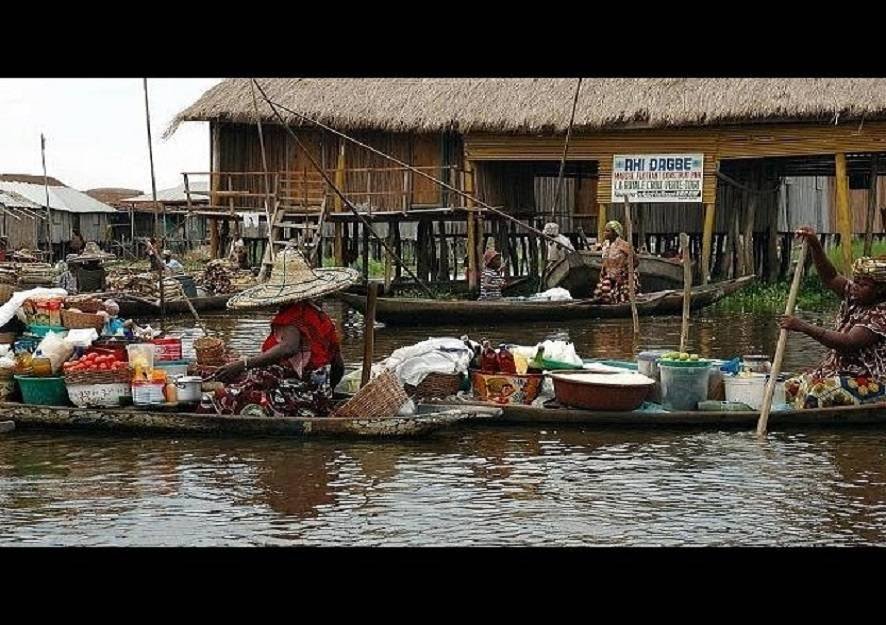Ganvie and its famous floating market are located in Benin, near Cotonou, on Lake Nokoué. This is where items discovered on canoes aren’t just seafood, but anything you’d find in a regular market — vegetables, fruits, soaps, medicinal plants, cooking oil, and so on.
Fishermen in Ganvie, a lake village, buy from lake traders. Everything happens in and around the water. Customers are served directly from the market on Lake Nokoué, in what has become known as the “Venice of Africa.” This is how Ganvie, Africa’s largest town on stilts, and its popular floating market came to be.
During the Portuguese slave trade in Africa in the 1600s, the Tofinu people of Southern Benin fled to Lake Nokoué to avoid capture by the Fon people of the great kingdom of Dahomey (present-day Benin). The West African kingdom’s Fon warriors were capturing people and selling them as slaves to European traders.
According to history, the Fon’s religious beliefs forbade them from fighting on the sacred Lake Nokoué. As a result, the lake’s shallow waters and islands became a haven for the Tofinu, who quickly established their new home there. After several decades, the Tofino settlement in the middle of the lake has evolved into Ganvie, home to approximately 20,000 people who live in stilted bamboo huts.
Read Also:
Tour Africa: A Look Into Lake Retba, Africa’s Only Pink Lake
Ganvie is thought to be Africa’s largest lake village, with residents known as “watermen.” Since its inception, the lake village has drawn tourists with its more than 2,000 buildings, which include a bank, hospital, church, mosque, post office, and, of course, the floating market. According to CN Traveler, its school is one of the few buildings that are not built on stilts.
As the lake continues to serve as a source of food and economic activity for all, residents engage in fishing and fish farming. Residents row dugout canoes to get from one place to another, and these same dugout canoes are used for artisanal fishing. Lake Nokoué, which is 20 km wide and 11 km long and covers an area of 4,900 ha, is also said to be used for Acadja, a type of fish breeding facility, according to visitors.
Ganvie was added to the UNESCO World Heritage Tentative List on October 31, 1996, in the Cultural category, thanks to its wonders, including its floating market, which is most active from 4 a.m. to 10 a.m.

